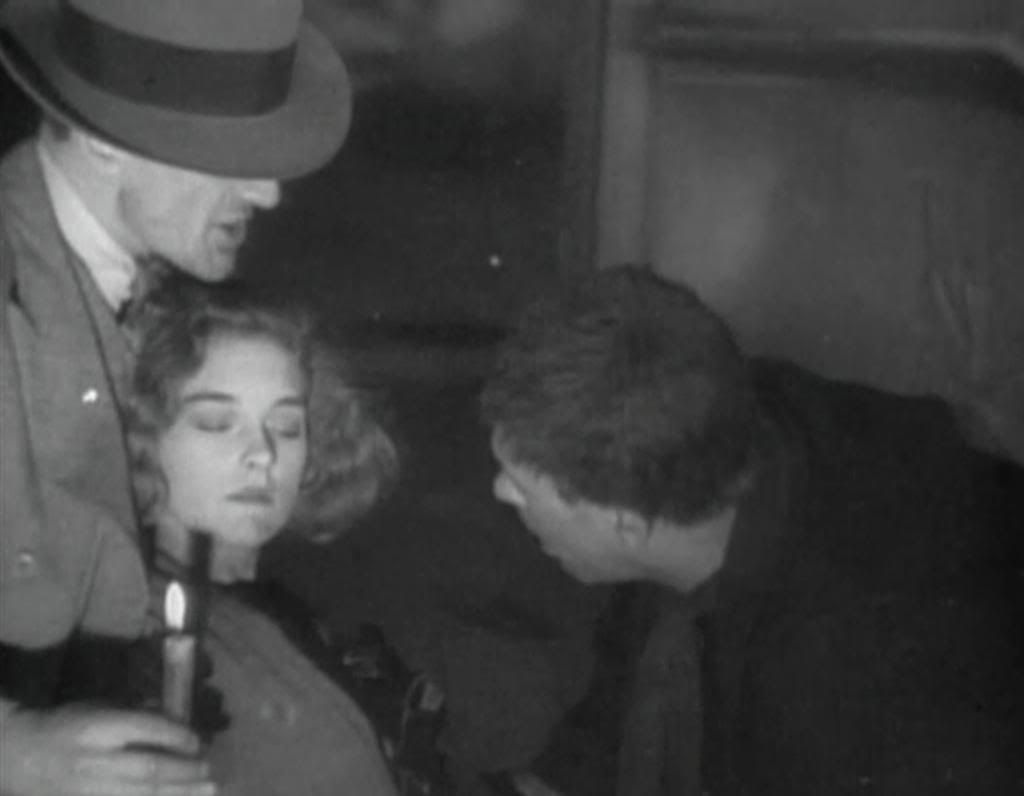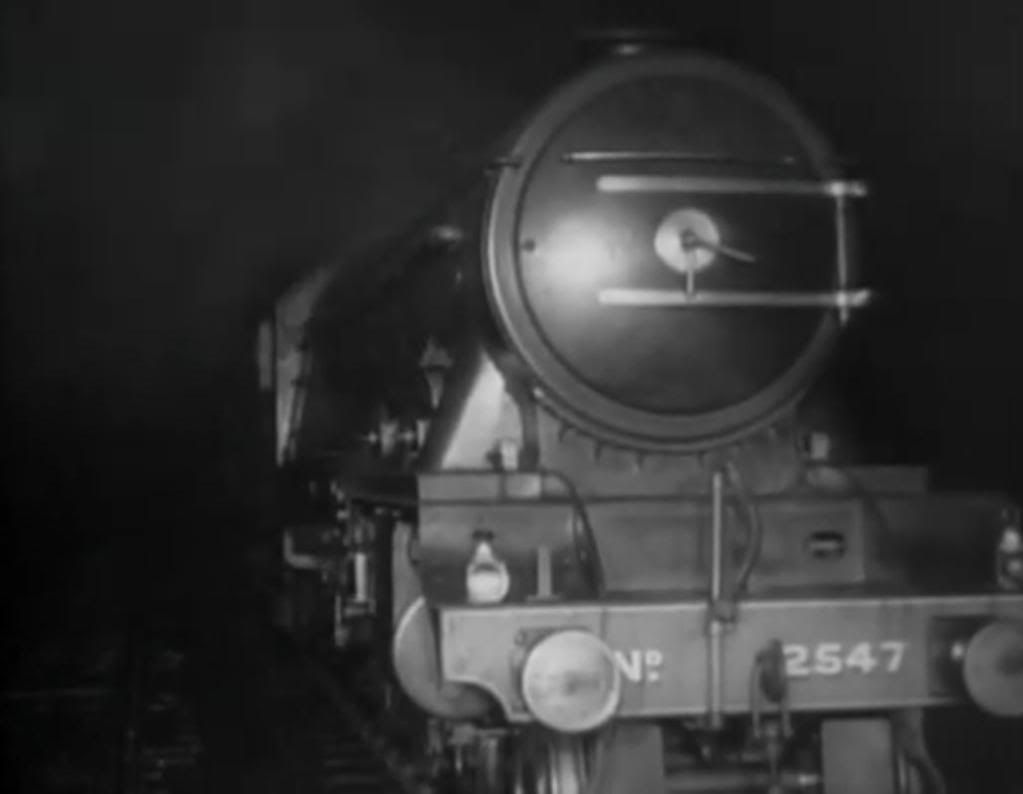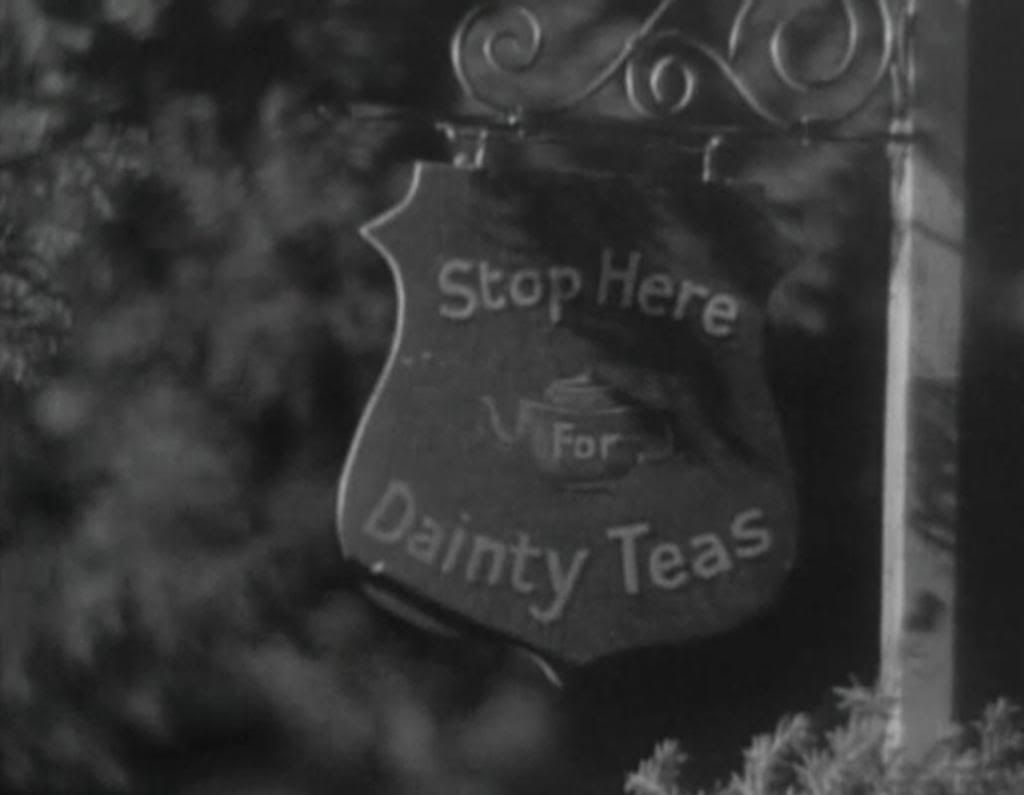 [This post is a contribution to the third annual For the Love of Film blogathon and fundraiser, which will be running from May 13-18. This year, hosts Marilyn Ferdinand, Farran Smith Nehme and Roderick Heath have dedicated the week to Alfred Hitchcock, whose early (non-directorial) work "The White Shadow" will be the beneficiary of any money earned during the event. Be sure to donate!]
[This post is a contribution to the third annual For the Love of Film blogathon and fundraiser, which will be running from May 13-18. This year, hosts Marilyn Ferdinand, Farran Smith Nehme and Roderick Heath have dedicated the week to Alfred Hitchcock, whose early (non-directorial) work "The White Shadow" will be the beneficiary of any money earned during the event. Be sure to donate!]For a film that its director didn't even want to make and later dismissed as terrible, Number Seventeen is a surprisingly entertaining, if more than a little ridiculous, minor thriller. The film was forced upon Alfred Hitchcock, then still very early in his career and coming off a box office flop that limited his options, so it's no wonder that he thought so little of it. In fact, it's a convoluted, frantically paced comic thriller that's devilishly difficult to follow, and doesn't even attempt to develop its narrative in the least until the hour-long movie's almost half over already, but is incredibly enjoyable anyway.
The plot involves a stolen diamond necklace, a bunch of crooks meeting up with their fence to split the take, a detective, the daughter (Ann Casson) of the man the necklace was stolen from, and an innocent bum (Leon M. Lion) caught up in this whole mess because he'd stumbled into the wrong building. Of course, none of these things are explained in the least until most of the movie's over already. To make things even more confusing, even when this basic scenario becomes clear, it's still not at all clear who's a crook and who's a detective. The film has a breakneck pace and hardly ever pauses to explain anything, which makes it not very satisfying narratively, but kind of fun in a baffling, manic way. It's the kind of film where a woman (Anne Grey) previously described as deaf-mute suddenly begins talking halfway through the movie, and it's never explained why, and where identities seem to switch every few minutes.
In the wordless, noirish opening sequence, the camera tracks rapidly along the sidewalk as fallen leaves and a man's hat are blown across the ground, stopping in front of a building where a man (John Stuart) runs into the frame to retrieve his hat. He stops outside the building, watching as lights mysteriously play off the walls inside, then he walks up to the door, which opens on its own like the entrance to the monster's lair in old horror movies. Inside, Hitchcock plays with expressionist shadows as the man prowls around, tracking someone else who's inside: there's a loud noise, a man collapses, his hand hanging over the upper railing and casting a tremendous shadow on the wall, and then the man from outside meets someone else wandering the abandoned building, who turns out to be the bum, Ben. They both find the body at the same moment, and Hitchcock finally deflates the tension with a jagged montage of a train roaring by, casting flickering lights over the two men — a forerunner of future Hitchcockian trains — and then cuts to brief, distorted closeups of both men comically screaming in terror.


More and more people begin converging on the abandoned building for mysterious reasons, and though nothing ever makes much sense, Hitchcock builds a compellingly eerie atmosphere as these people cluster in the darkness, listening for strange noises as shadows dance across the walls. At one point, the original man goes downstairs to check on noises at the front door, and he looks out the window to see smoke wafting up from the man on the other side of the door. Much else is conveyed with shadows and loud noises, and as more and more people show up, seemingly all of them toting guns and mysterious appointment cards, it increasingly begins to seem like Hitchcock's going for the atmosphere of a mystery/thriller with a plot that keeps getting more and more complicated without ever fully resolving itself. The film's pretty much a mess, but Hitchcock handles the narrative pile-up so deftly that it's easy to overlook the shambles of the script and simply enjoy the moody visuals and goofy comic asides.
Ben's a very comic character, a tramp who's stumbled into a mystery and just wants out. Hitchcock gives him some fun business to do, further distracting from the plot, like the scene where he checks to see if a gun's loaded by peering into and blowing into its barrel. He then tries to stalk his own shadow before realizing what it is, and playfully waves his arms about, watching as his stretched-out shadow mimics him.
The film finally accelerates to a manic, chaotic climax with a chase between a speeding train and a commandeered bus, much of the chase achieved with some nicely done scale models. Hitchcock keeps cutting back and forth between the bus and the train, conveying the rapid pace of it all and also emphasizing the humor, showing the bus passengers bouncing in their seats as it careens along, flying by a sign that reads, "stop here for dainty teas." It all ends with an epic crash, the detective's identity changes a few more times, and in the final shot, Ben gets his moment of glory, grinning heroically for the camera. It's an extremely absurd and sloppy movie, but its lighthearted tone and Hitchcock's shadowy expressionist approach to it make it nearly irresistible.

4 comments:
I like your observation that at a certain point nothing makes sense but Hitchcock still manages to make things eerie; this pretty much sums up a lot of his work Nice précis.
Oh, I'm so glad you included this film. This crazy, crazy film. I'm tempted to go as far to say it's my favorite of his early works. It's that entertaining to me.
I'd agree that the expressionist element is the most interesting aspect of the film, which was a mixed bag, methinks. Certainly better than some of those early silents, it still didn't show Hitch in the form he would become shortly. I also love the atmospheric opening, even while realizing the narrative is somewhat underdeveloped. Another marvelous essay in your tireless run for the film preservation blogothon.
Thanks, all. This one is very crazy indeed and kind of nonsensical, but I do adore its idiosyncrasy. As Sam says, it's a mixed bag, but there's just so much to love here and in many ways the incoherence of the movie just adds to its weird appeal.
Post a Comment